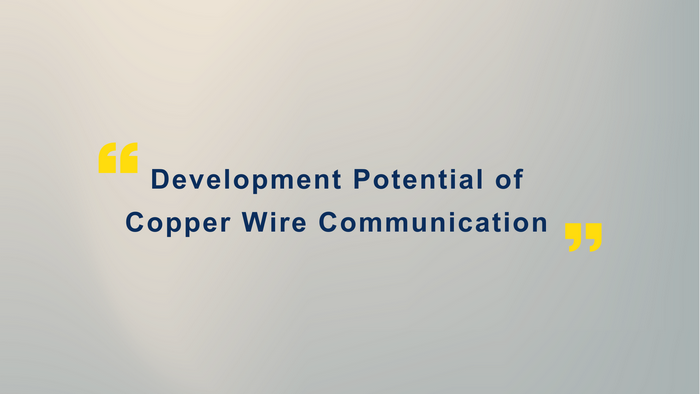
Copper wire communication has provided the foundation for global communications over the past few decades. However, with the advancement of technology, especially the rise of fiber optic and wireless communication, the use of copper wire communication has gradually been challenged. Still, there is some potential for further development, depending on the following factors:
1.Maintenance and Upgrades of Existing Infrastructure
In many countries and regions, especially developed ones, copper wire communication (such as PLC and DSL) is still one of the main ways to access the internet. Although more advanced technologies like fiber optics and 5G are being promoted, in some remote or rural areas, the cost of building fiber to the home (FTTH) is relatively high, and copper wire communication still offers a cost-effective solution. As a result, many service providers choose to improve the speed of copper wire communication through upgrades (such as VDSL, PoC) to extend its lifespan as much as possible.
2.Complementary Role of Copper Wire Communication
In certain situations, copper wire communication can still complement and support more advanced technologies. For example, in some older network environments, copper wire can extend existing communication links. Especially when fiber optics cannot be installed immediately, copper wire can work alongside other technologies (such as Wi-Fi, PoE, Ethernet) to provide basic network coverage.
3.Low Cost and Wide Coverage
Compared to fiber optics and 5G, the cost of building and maintaining copper wire networks is lower, especially in areas where a large amount of copper infrastructure already exists. This can save significant labor and time. Therefore, in areas with tight economic conditions or limited budgets, copper wire remains a viable communication option. Particularly in small cities or rural areas, copper wire networks may still be the best choice.
4.Industrial Applications and Specialized Communication
Copper wire communication still has demand in certain industrial applications, especially in scenarios requiring low speeds and high stability. For example, in some traditional industrial facilities, surveillance systems, and old buildings, copper wire communication remains effective as a transmission medium, especially in applications with short distances and low bandwidth needs.
5.Technology Integration
As network technologies develop, copper wire communication is not completely obsolete. It can integrate with other technologies to form hybrid network solutions. For example, PoE (Power over Ethernet) can use the existing copper wire network to provide both power and data transmission, suitable for devices like IP cameras and access control systems, extending the lifespan of copper wire in emerging applications.
Summary of Development Potential:
Despite facing fierce competition from fiber optic and wireless technologies, copper wire communication still has potential for development due to its cost, existing infrastructure, and specific demands in certain fields. Especially in cases with mid- to low-bandwidth needs, remote areas, and some industrial applications, copper wire communication can still provide an effective solution.